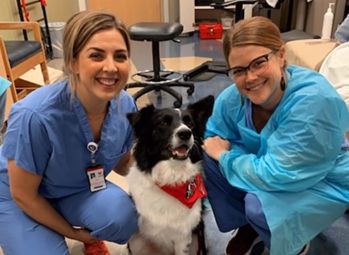What Kinds of Animals Will Qualify?
Besides dogs and cats, there are a great many other species that make wonderful visiting animals and can form strong human-animal bonds. To name just a few: birds, rabbits, goats, domestic rats, hamsters, guinea pigs, ducks and chickens, goats, miniature pigs, llamas, cows and horses.
At this time, Intermountain Therapy Animals does not work with large animals like llamas, cows and horses. Also, animals such as snakes, ferrets, lizards and wild or exotic animals are not registered. Wild or exotic animals are not legally acceptable as pets in many states, and generally have minimal interest in relating with humans. Also, without more research documenting their predictability over time, we cannot accurately evaluate their behavior, their reaction to stress, and whether there would be health risks for either the animals or the humans they meet.



